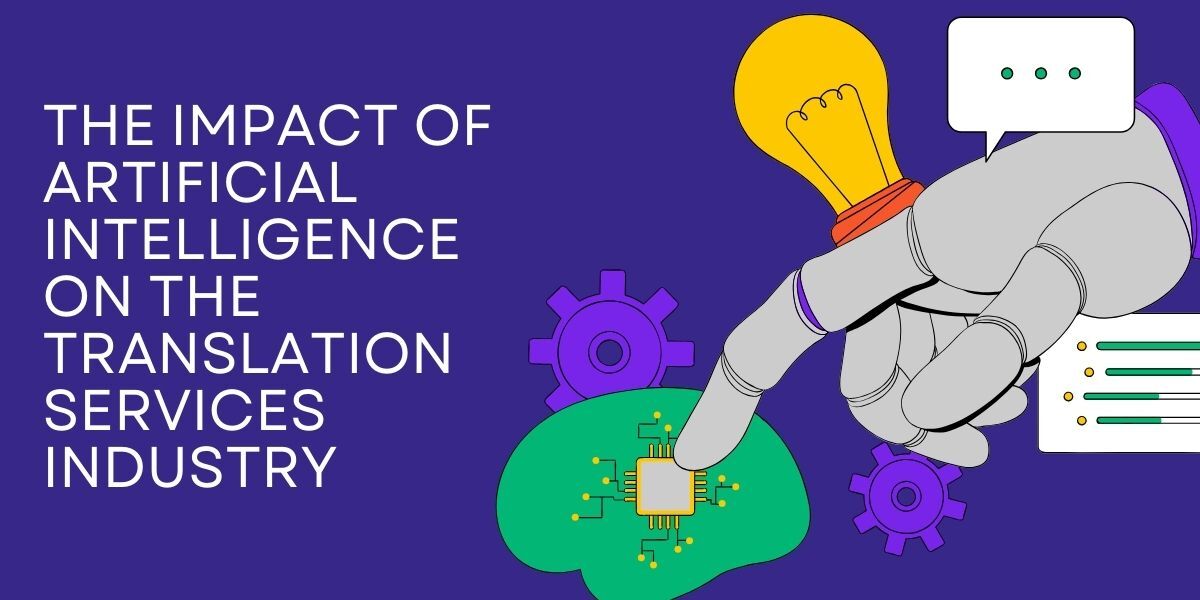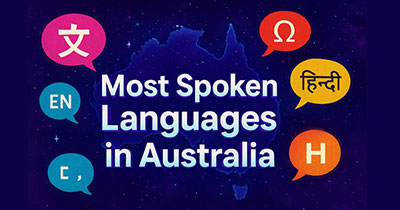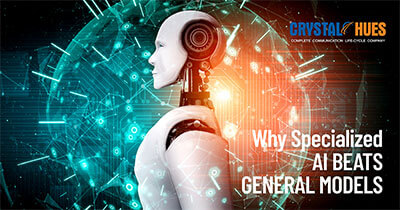
The Impact of Artificial Intelligence on the Translation Services Industry
The Impact of Artificial Intelligence on the Translation Services Industry
In the past ten years, artificial
intelligence translation has changed the way we get around language barriers.
Human translators used to go through dictionaries to translate texts. AI uses
the same approach but can do it faster.
Millions of translated texts run through
neural networks which function in translation programs offered by Google
Translate, DeepL and Microsoft Translator. The networks extract information
from various texts to create translations with improved accuracy.
Artificial intelligence translation
developed past its original word-by-word conversion practices. AI translation
tools show capability to understand both specific expressions and regional
terms and original texts.
Machine translation has evolved in the past
decade. Now, AI can effectively complete patient records and medical paper
translations for healthcare. AI-based tools operated by legal companies
perform document translation including contracts for both legal documents and
international legal agreements. AI can translate product descriptions and
create marketing content for ecommerce platforms.
Read the article to know more about the
huge impact that artificial intelligence translation is making in the
translation services industry.
Key Impacts of on the Translation
Industry
Artificial intelligence translation has
made translation much faster. Once weekly projects now complete in days or
hours. This speed makes it easier for businesses to reach foreign markets and
handle urgent translation needs.
Cost Reduction and Affordability
AI technologies have introduced price
reductions for translation services. The expense declined due to automation in
basic translation activities that remove human involvement from the process. Now,
even a small business owner has its webpages translated at a minimal cost. Translation
services have become available to all people due to these changes leading to
increased global commerce and mutual engagement.
Large Project Consistency
AI supports uniformity in papers by keeping
particular terminologies consistent during technical manual and marketing
material translations. The requirement for brand voice stability along with
technical precision between different languages depends on language uniformity.
Improved First Draft Quality
Emerging AI translation systems create
fundamental versions which demand less revision so professionals can adjust the
texts. Human translators now perform editing functions and cultural consulting
duties because of these efficiency improvements.
Real-time correspondence
It is now possible to talk to diverse
people regardless of their language. Video-conferencing platforms now integrate
instant translation features making communication possible between people who
do not share a common language. The features of international business talks
and educational exchanges experienced significant changes because of this
technology.
Customised Content Translation
Industry-specific texts have taught AI
systems how to translate technical, medical, and legal texts using the right
terms and context. Professional translations in these disciplines are more
accurate due to this specialisation.
Context Awareness
The AI tools now use context together with
subject expertise and audience expectations for translation purposes. A person
requires fewer translation aids because AI translation tools understand
cultural conventions leading to better normalization of translations.
Variety of Jobs
AI has added translation jobs. Machines
have replaced specific translation tasks. However, AI trainers and post
editor’s positions have cropped up as new job positions. You now need language
fluency along with technical expertise.
Global Content Accessibility
AI technology enables every language
speaker to find content easily accessible. Exact translation services for news
articles together with research papers and educational materials help achieve
worldwide accessibility.
Improving quality control
Artificial intelligence translation has
made it easier to keep an eye on the quality of translation services. Advanced
algorithms can detect typos, inconsistencies, and mistranslations, ensuring
quality output. These quality checks go along with human review and make the
end product better.
The Way Forward
The future of translation services is likely
to see more and more AI technologies being used with human knowledge. AI has
automated many basic translation operations, but human translators are needed
for quality, cultural sensitivity, and creativity. The business world is going
towards a model where AI does simple translations and helps humans with more
difficult ones.
The evolution shows that good translation services will combine technology and human insight. Artificial intelligence translation systems will improve, allowing human translators to focus on cultural consultation, creative translation, and quality assurance. The future of translation is discovering the best approach to blend human and AI strengths for better results.



